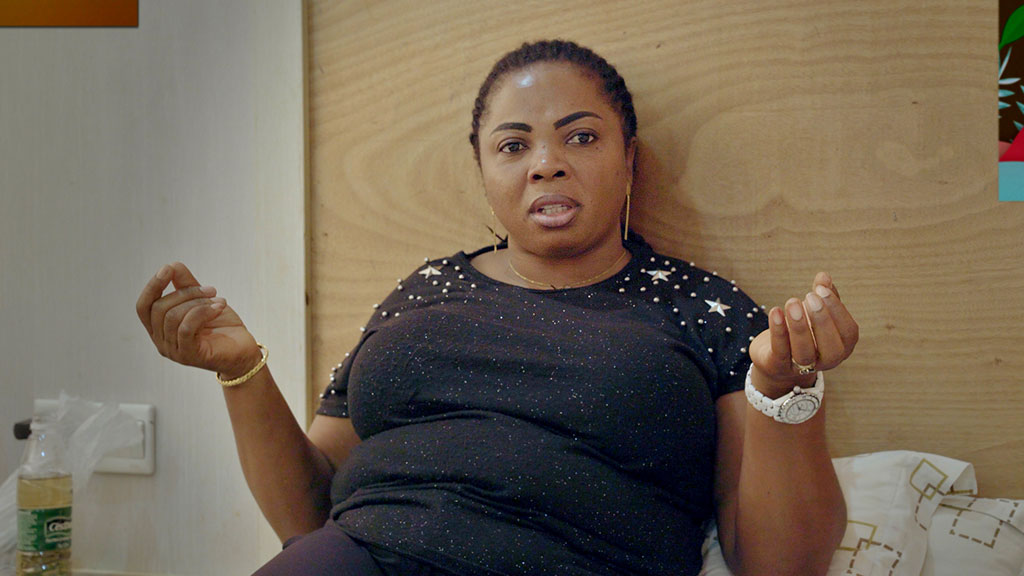ART CITIES:Paris-China <-> Africa
 At the turn of the 20th century, W. E. B. DuBois* advocated the idea that Asia could forge the pathway for worldwide racial liberation. As an echo to this belief, we have witnessed an increasingly strong tie between China and Africa, which has been established through political, ideological, and to a large extent, economic interests. This Afro-Asian meeting of two principal regions of the Global South sheds light on the urgency to shift away from the colonial and Western frameworks of representation.
At the turn of the 20th century, W. E. B. DuBois* advocated the idea that Asia could forge the pathway for worldwide racial liberation. As an echo to this belief, we have witnessed an increasingly strong tie between China and Africa, which has been established through political, ideological, and to a large extent, economic interests. This Afro-Asian meeting of two principal regions of the Global South sheds light on the urgency to shift away from the colonial and Western frameworks of representation.
By Dimitris Lempesis
Photo: Centre Pompidou Archive
The exhibition “China <-> Africa” at Centre Pompidou continues to explore the history of non-Western contemporary art, with a special focus on the ties between China and Africa. The exhibition examines the real and imaginary spaces resulting from this dialogue, which were first constructed within a framework of Marxist ideology and colonial and then de-colonial history. Yet it is also an implicit interrogation of Western history, as it relates to these regions. This exhibition is an attempt to reveal and rethink the phenomena rooted in this Sino-African encounter, from the shared imagery of struggles to the configuration of a transcultural or globalized identity. It questions certain economic trends, the social transformations born out of this and propels the unleashing of critical imagination. François-Xavier Gbré and Kiluanji Kia Henda place the Sino-African theory in the context of Marxist and colonial histories. For Gbré, the fractured narrative of the Bamako swimming pool, built in 1969 by the USSR for the first African games, which never took place and later renovated by the Chinese, became an account of a shift in geopolitical influence. In Henda’s film installation, a stuffed antelope in Luanda Museum of Natural History, which is also a symbol of Angolan national identity, recounts its condition as an ethnographic artefact that is simultaneously suffused with the consternated memory of the civil war and with the Chinese presence today. The exhibition also considers how economic cooperation can be an influential force on the cultural spheres as well as the notion of national identity. Musquiqui Chihying positions the history of Sino-African relations as a starting point – the archaeological discovery of Ming-era coins in Kenya – to highlight the current boom of Chinese built cultural institutions in Africa. Yonamine and Pratchaya Phinthong adopt a conceptual and critical approach to the Chinese presence as an economic and symbolic transaction, one that is reinvested in a relational space devoted to questions and appeasement. The films of Marie Voignier and Wang Bing, on the other hand, provide a personal layer to the macro narrative of this transcultural relationship. While Voignier turns her observational lens on a community of Cameroonian shopkeepers on Guangzhou, Wang’s film is a reflection of the daily lives in Lagos via his encounter with a Nigerian who travels frequently to China for business opportunities. This more personal sentiment also permeates Anawana Haloba’s installation, which manifests itself as a poetic restitution of a railway line in Zambia constructed by the Chinese workers, in the form of a filmic, literary, bodily and audio choreography. The interweaving of critical engagements from the past and the present here also leads to speculations of the future. In this context, the potentials, as well as the failures and alternatives to various forms of economic cooperation are utilised as connections to explore the socio-political realm. In her paintings, Cui Jie employs the images of Chinese telecommunication signal towers in Africa as a way to open up an imaginary space of control and prosperity. And Musquiqui Chihying, together with Elom 20ce and Gregor Kasper, propose a new currency that could become an alternative to the transnational and controversial CFA franc, whereas Binelde Hyrcan is inspired by the legendary flight of the Chinese dignitary Wan Hu to reflect on the shortcoming of the Angolan space policy.
Participating Artists: Kiluanji Kia Henda, Musquiqui Chihying, Binelde Hyrcan, Cui Jie, François-Xavier Gbré, Annie Anawana Haloba, Wang Bing, Marie Voignier, Yonamine and Pratchaya Phinthong.
* William Edward Burghardt Du Bois was an American civil rights activist, leader, Pan-Africanist, sociologist, educator, historian, writer, editor, poet, and scholar. In 1909, Du Bois was among the founders of the National Association for the Advancement of Colored People (NAACP) and from 1910 to 1934 served it as director of publicity and research, a member of the board of directors, and founder and editor of “The Crisis”, its monthly magazine. In “The Crisis”, Du Bois directed a constant stream of agitation, often bitter and sarcastic at white Americans while serving as a source of information and pride to African Americans. The magazine always published young African American writers. Racial protest during the decade following World War I focused on securing anti-lynching legislation. During this period the NAACP was the leading protest organization and Du Bois its leading figure.
Info: Curator: Alicia Knock, Centre Pompidou, Place Georges-Pompidou, Paris, Duration: 4/3-18/5/20, Days & Hours: Mon, Tue-Wed & Fri-Sun 11:00-21:00, Thu 11:00-23:00, www.centrepompidou.fr

Right: Cui Jie, Base Station, 2020, Acrylic and spray paint on canvas, 200 x 150 cm, © Cui Jie, Courtesy the artist and Antenna Space
![Kiluanji Kia Henda, Havemos de Voltar (We Shall Return), [Film Still], 2017 Single channel film, 17’30’’, Courtesy of the artist and Jahmek - Contemporary Art, Luanda](http://www.dreamideamachine.com/web/wp-content/uploads/2020/03/Kiluanji-Kia-Henda-Havemos-de-Voltar-We-Shall-Return-Film-Still-2017-2.jpg)

